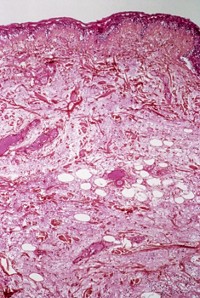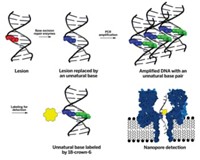Advertisement
Grab your lab coat. Let's get started
Welcome!
Welcome!
Create an account below to get 6 C&EN articles per month, receive newsletters and more - all free.
It seems this is your first time logging in online. Please enter the following information to continue.
As an ACS member you automatically get access to this site. All we need is few more details to create your reading experience.
Not you? Sign in with a different account.
Not you? Sign in with a different account.
ERROR 1
ERROR 1
ERROR 2
ERROR 2
ERROR 2
ERROR 2
ERROR 2
Password and Confirm password must match.
If you have an ACS member number, please enter it here so we can link this account to your membership. (optional)
ERROR 2
ACS values your privacy. By submitting your information, you are gaining access to C&EN and subscribing to our weekly newsletter. We use the information you provide to make your reading experience better, and we will never sell your data to third party members.
Sequencing
Nanopores Sequence Bacterial Genome
DNA Sequencing: Data-processing method leads to sequence that is 99.5% accurate
by Celia Henry Arnaud
June 22, 2015
| A version of this story appeared in
Volume 93, Issue 25
Nanopore sequencing can read stretches of DNA thousands of bases long. Such a capability is particularly useful for sequencing repetitive regions of the genome. But nanopore sequencing tends to be less accurate than other DNA sequencing methods at identifying individual bases. To get around this problem, researchers have previously taken a hybrid approach in which they use short reads from other technologies to correct long reads before assembling the sequence. Jared T. Simpson of the Ontario Institute for Cancer Research and the University of Toronto and Nicholas J. Loman and Joshua Quick of the University of Birmingham, in England, have for the first time assembled a bacterial genome using just nanopore sequencing data (Nat. Methods 2015, DOI: 10.1038/nmeth.3444). To improve accuracy, the researchers used only sequences for which both strands of a DNA segment had been read. The researchers lined up the sequence by detecting overlaps between reads and used an alignment process to correct base identification errors. After assembling the corrected reads into a contiguous sequence, the team used additional signal processing to improve accuracy of base identification to 99.5%.




Join the conversation
Contact the reporter
Submit a Letter to the Editor for publication
Engage with us on Twitter